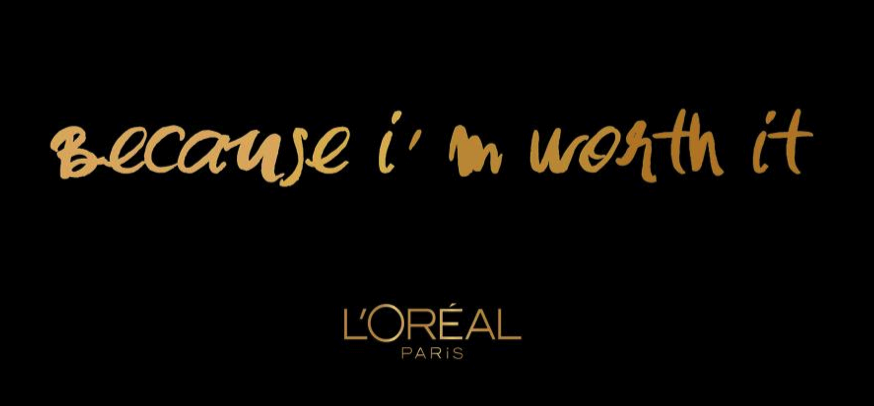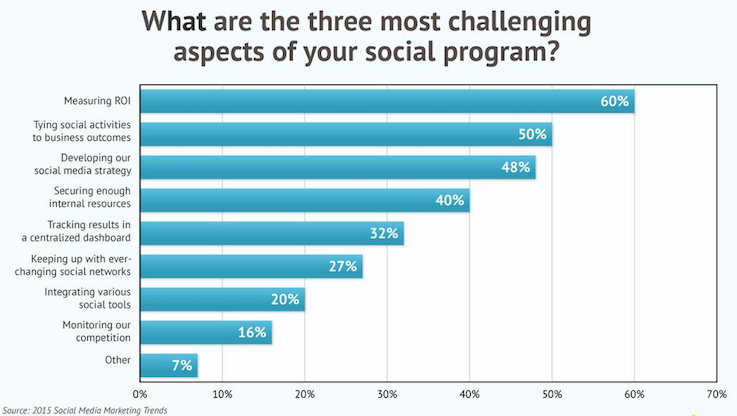We’re all familiar with that L’Oreal strapline – “because I’m worth it.” The phrase was first used by L’Oreal in 1973, and struck a chord with its target audience of the women of the day, women who at that time were becoming increasingly independent.
Since then the phrase “because I’m worth it” has even become part of our social fabric, not only entering every day language but also taking on a meaning over and above the original intention. In fact, L’Oreal claim that today around 80% of women “recognise and respond to this positive phrase and powerful sentiment.”
So for L’Oreal it was definitely worth it, and for any marketer today that is the key question. Is it worth it? Especially if you have limited resources you need to focus your money, time and effort on those marketing channels that deliver the best returns.

So where does social media fit into all this? There is tremendous pressure from all sides to be ever present on all the major social media channels. FOMO was never more true than in marketing, whether you are doing major B2B marketing for a global corporation, a smaller business selling high end products to discerning customers, or even an PPC agency for loan companies: the pressure is the same. Be out there everywhere or lose out.
But whilst being busy on social media can make you feel that you are doing all the right things and interacting effectively with existing and potential customers, how much do you actually need to do to be effective? Is there a danger of excess time and effort being deployed when it could be diverted to other channels? As a society we are becoming obsessed with social media, and the temptation to drift into wasting time on social media overkill – and justifying it as essential marketing – is strong.
Social media attribution is not easy. In fact it is a major problem for a lot of marketers. Recent research from econsultancy indicates that:
- 46% of B2B marketers say they’re not sure whether any social channels have generated business revenue.
- 80% of marketers use engagement as their primary success metric, 56% focus on site traffic.
- 60% of marketers cite “‘measuring ROI’”as one of their top three social media marketing challenges; 50% of say “tying social media activities to business outcomes”.

So if this is an area that you are struggling with, you’re not alone. The recent CMO Survey also indicated that whilst social media spending has increased 234% from 2009 to 2017 – accounting for 11.7% of total marketing budgets – only 20.3% of marketers say they are able to prove the impact quantitatively.
However, it is possible to measure ROI from social media. Measuring ROI on social media will have multiple advantages for your marketing department. For example:
- it will change the perception of social media within your organization
- it will demonstrate the potential impact that social media could have on other departments outside of marketing
- it enables you to see more clearly where your marketing resources are being used most effectively and to tweak your strategy accordingly
- it can help you to identify gaps in your overall strategy, key messages, and content
- it enables you to gain a better understanding of customer perceptions and preferences
Jay Baer – a leading Inspirational Marketing and Customer Service speaker – puts it like this: “Here’s the deal. If you want to measure social media ROI, stop wasting your time doing software demos and attending webinars. Just figure out what you want to track, where you can track it, think about both current customers and new customers, and go do it.”
So what are some of the ways you can go about measuring ROI on social? The following three steps will prove invaluable:

Scored a goal
1: Set objectives and goals
First you need to be realistic about your goals. You need to agree your overall social media objectives and then set specific measureable goals based on each of them. Examples of objectives might be:
- Business conversions eg lead generation or landing page conversion
- Brand awareness or perception
- Customer experience
- Security and risk mitigation
- Once you have set your objectives there then need to be measurable goals for each. For example specific numbers of leads or specific dates by which key milestones are to be achieved.

2: Decide the key metrics
The next step is to carefully select the metrics you will use to measure ROI.
The obvious ones to start with are the social metrics such as followers, likes, comments, and shares. These have often been dismissed as purely vanity measures, but can still be a significant indicator of the overall health of your social media presence.
They can also provide a quick means of comparing yourself with your competition, and inform the type of content with which your audience is engaging.
However, social metrics should not be used in isolation. You also need to be able to measure how closely your social media activity is related to – and supports – your business objectives. This is essential for proving its relevance to all stakeholders within your organisation.
Some examples of metrics that you could use for this purpose are:
- Site traffic
- Reach
- Audience engagement
- Leads generated
- Conversions
- Revenue

3: Use effective tools
Once you know what you need to measure, there are a variety of tools available on the market to help you. Tools that can help you to set up conversion funnels, track the customer journey and actions, analyse data, and then report effectively on the results.
The best known toolset is Google Analytics. This will enable you to track website traffic, and the number of conversions and sign-ups that originate from social media campaigns. There is also Facebook Pixels, which enables you to place a piece of code on your website to track conversions from Facebook ads. But there are many other tools available out there – one of which will be the right one for you.
Just to conclude, it is worth also looking at organisations that have not only successfully measured ROI on social media activity, but who have then been able to prove its worth.
One such is telecommunications giant BT. Much of their customer service enquiries are now handled via social media rather than call centres. For example if you write a comment on Facebook or Twitter complaining about an issue with any aspect of your BT service, you will shortly receive a message from BT asking how they can help.
BT estimated that this saved them £2 million, and many customers prefer this method of communication to using a call centre, particularly one with an Interactive Voice Response system. Interestingly, BT have subsequently had to increase staffing at call centres because of customer dissatisfaction. We can’t help wondering if the effectiveness of BTs social media has impacted on this by raising customer expectations that call centres are unable to meet.

A more straightforward example is KLM who in 2014 claimed to have made €25m directly from social media. KLM use social media for branding, service and commerce. Using a last-click attribution model they tracked a total of €25m in sales from social media.
Because increasingly social media can be used as a door opener for direct sales as well as interacting. Whatever the size of your business, and whatever product or service you are providing, you or your salesforce can build up sales by using their own social profiles to supplement whatever the business is doing socially.
Using social media for networking and getting involved in relevant conversations can break down barriers with potential clients. A recent Forbes study found that sales reps using social media as part of their sales techniques can outsell around 78% of their peers.
So, however you are using social media in your business the thing to do is to decide what you are trying to achieve and then begin to measure the effectiveness of those goals. You may find that social media is working well for you in all kinds of ways – or you may find that the time, effort and resources are not justified financially.
Either way, it is better to know than not to know, and you are then in a strong position to decide what to tweak to make social media worth it.

